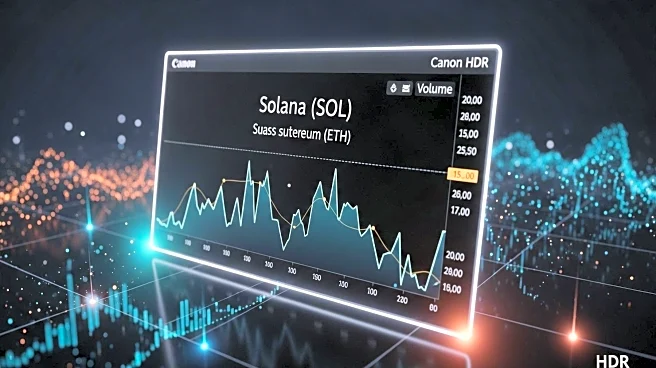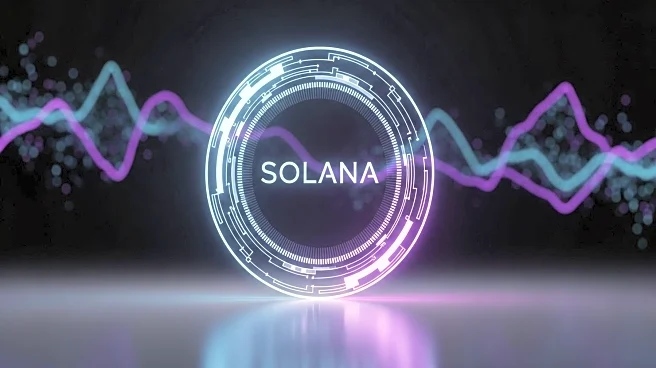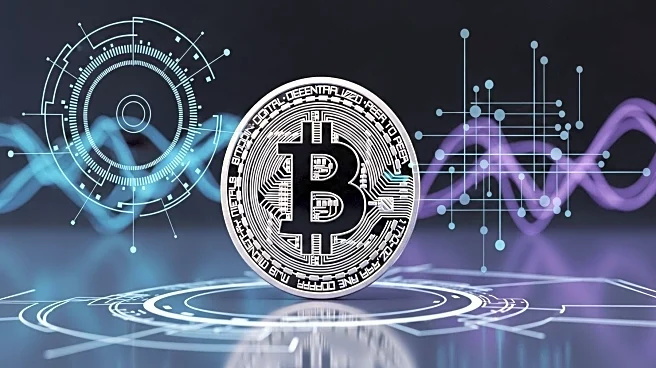What's Happening?
Solana (SOL) has recently demonstrated a modest upward trend, trading at $202.96, marking a 0.13% increase. Despite rebounding from a 70% decline earlier this year, Solana has outperformed Ethereum in decentralized exchange (DEX) activity, recording $241 billion in throughput from July to August, surpassing Ethereum's $234 billion. Solana's network advantages, such as high throughput, low fees, and fast transaction finality, make it attractive for high-frequency traders. However, Solana faces challenges in converting on-chain activity into long-term adoption, with a high churn rate of addresses indicating speculative transactions. The Solana-to-Ethereum exchange rate has declined, highlighting Solana's struggles against Ethereum despite superior DEX throughput.
Why It's Important?
Solana's performance in DEX volume is significant as it showcases the network's technical strengths, potentially attracting traders and liquidity providers. However, the high churn rate and speculative nature of transactions raise concerns about long-term user retention. Solana's positioning as a high-risk, high-growth asset contrasts with Ethereum's established status, affecting investor confidence. The U.S. Securities and Exchange Commission's regulatory proposals could impact market dynamics for Solana and other crypto assets, influencing its trajectory and adoption.
What's Next?
The evolution of regulatory frameworks will be crucial in determining Solana's future market position. Analysts are closely monitoring whether Solana's recovery is temporary or the start of a sustained uptrend. The network's ability to attract and retain a stable user base will be key to its long-term success. Investors must consider regulatory developments and market conditions when assessing Solana's potential.
Beyond the Headlines
Solana's challenges in achieving sustained adoption highlight broader issues in the cryptocurrency market, such as the balance between technical innovation and user retention. The network's ability to convert technical advantages into real-world adoption will be critical in shaping its future. The regulatory landscape adds complexity, potentially affecting investor behavior and market liquidity.











